
Unveiling the Crystal Clarity: The Versatile World of Transparent PET/PE Film
2025-10-21 13:56Introduction: A Window into InnovationImagine unwrapping a fresh pack of strawberries, the vibrant red berries gleaming through a crystal-clear barrier that keeps them pristine and protected. Or picture a bustling supermarket aisle where disposable cutlery arrives neatly sealed, ready for instant use without a hint of contamination. These everyday miracles are powered by transparent PET/PE film—a marvel of modern materials science that blends the robustness of polyethylene (PE) with the clarity and strength of polyethylene terephthalate (PET). This co-extruded laminate isn't just a thin sheet of plastic; it's a multifunctional powerhouse that has revolutionized packaging across industries.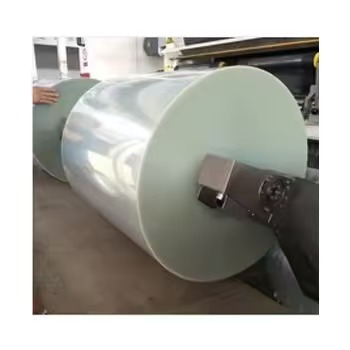 At its core, transparent PET/PE film is a multilayered structure where PET provides a glossy, high-clarity outer layer, and PE offers inner flexibility and sealability. This synergy results in a material that's not only visually appealing but also engineered for performance. With thicknesses ranging from 20 to 100 microns, it strikes a balance between durability and lightweight efficiency, weighing as little as 10-15 grams per square meter. Its transparency—often exceeding 90% light transmission—ensures product visibility, boosting consumer appeal by up to 30% in retail studies, where shoppers gravitate toward packages that "show and tell" without revealing flaws.
At its core, transparent PET/PE film is a multilayered structure where PET provides a glossy, high-clarity outer layer, and PE offers inner flexibility and sealability. This synergy results in a material that's not only visually appealing but also engineered for performance. With thicknesses ranging from 20 to 100 microns, it strikes a balance between durability and lightweight efficiency, weighing as little as 10-15 grams per square meter. Its transparency—often exceeding 90% light transmission—ensures product visibility, boosting consumer appeal by up to 30% in retail studies, where shoppers gravitate toward packages that "show and tell" without revealing flaws.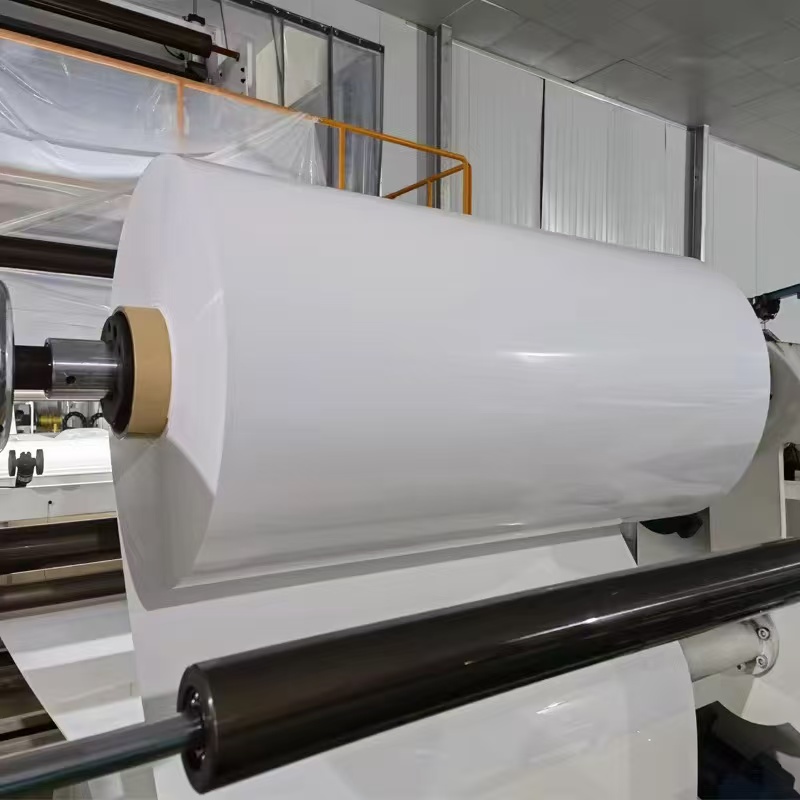 But what makes this film truly indispensable? It's the interplay of properties: exceptional tensile strength (up to 200 MPa for PET layers), puncture resistance, and thermal stability that withstands temperatures from -40°C to 120°C. Add in its low moisture vapor transmission rate (MVTR) of less than 5 g/m²/day and oxygen barrier capabilities, and you have a material that's as protective as it is pretty. These attributes aren't abstract; they're battle-tested in real-world scenarios, from high-speed production lines to the rigors of global shipping. In this article, we'll dive into the film's standout characteristics and illuminate its starring roles in food blister packaging, disposable cutlery wrapping, antistatic enclosures, liquid containment, and leak-proof solutions. Through vivid examples and grounded insights, we'll see how this unassuming film safeguards our daily lives with elegance and precision.
But what makes this film truly indispensable? It's the interplay of properties: exceptional tensile strength (up to 200 MPa for PET layers), puncture resistance, and thermal stability that withstands temperatures from -40°C to 120°C. Add in its low moisture vapor transmission rate (MVTR) of less than 5 g/m²/day and oxygen barrier capabilities, and you have a material that's as protective as it is pretty. These attributes aren't abstract; they're battle-tested in real-world scenarios, from high-speed production lines to the rigors of global shipping. In this article, we'll dive into the film's standout characteristics and illuminate its starring roles in food blister packaging, disposable cutlery wrapping, antistatic enclosures, liquid containment, and leak-proof solutions. Through vivid examples and grounded insights, we'll see how this unassuming film safeguards our daily lives with elegance and precision.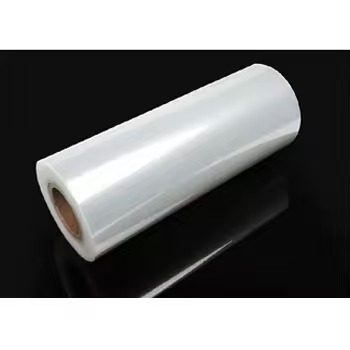 Core Properties: The Building Blocks of BrillianceTo appreciate transparent PET/PE film's prowess, let's dissect its key properties, each honed through precise extrusion processes where molten polymers are layered and cooled in a vacuum to eliminate imperfections. First, optical clarity reigns supreme. Unlike opaque alternatives, this film's refractive index closely matches glass (around 1.5), creating a "see-through" effect that mimics natural light refraction. In lab tests, it scatters less than 2% of incident light, making contents pop with lifelike vibrancy—think of how a wedge of lemon cake looks almost edible through its blister dome, enticing impulse buys.Mechanical resilience follows suit. The PET layer imparts a modulus of elasticity over 3 GPa, allowing the film to flex without fracturing, while PE's elongation at break exceeds 500%, preventing tears during handling. This duo shines in drop tests: a 1 kg packaged item survives 1.5-meter falls unscathed, a critical edge in e-commerce where rough transit is the norm. Thermally, it seals seamlessly at 140-180°C via heat or ultrasonic methods, forming hermetic bonds that endure microwave bursts or pasteurization without warping.
Core Properties: The Building Blocks of BrillianceTo appreciate transparent PET/PE film's prowess, let's dissect its key properties, each honed through precise extrusion processes where molten polymers are layered and cooled in a vacuum to eliminate imperfections. First, optical clarity reigns supreme. Unlike opaque alternatives, this film's refractive index closely matches glass (around 1.5), creating a "see-through" effect that mimics natural light refraction. In lab tests, it scatters less than 2% of incident light, making contents pop with lifelike vibrancy—think of how a wedge of lemon cake looks almost edible through its blister dome, enticing impulse buys.Mechanical resilience follows suit. The PET layer imparts a modulus of elasticity over 3 GPa, allowing the film to flex without fracturing, while PE's elongation at break exceeds 500%, preventing tears during handling. This duo shines in drop tests: a 1 kg packaged item survives 1.5-meter falls unscathed, a critical edge in e-commerce where rough transit is the norm. Thermally, it seals seamlessly at 140-180°C via heat or ultrasonic methods, forming hermetic bonds that endure microwave bursts or pasteurization without warping.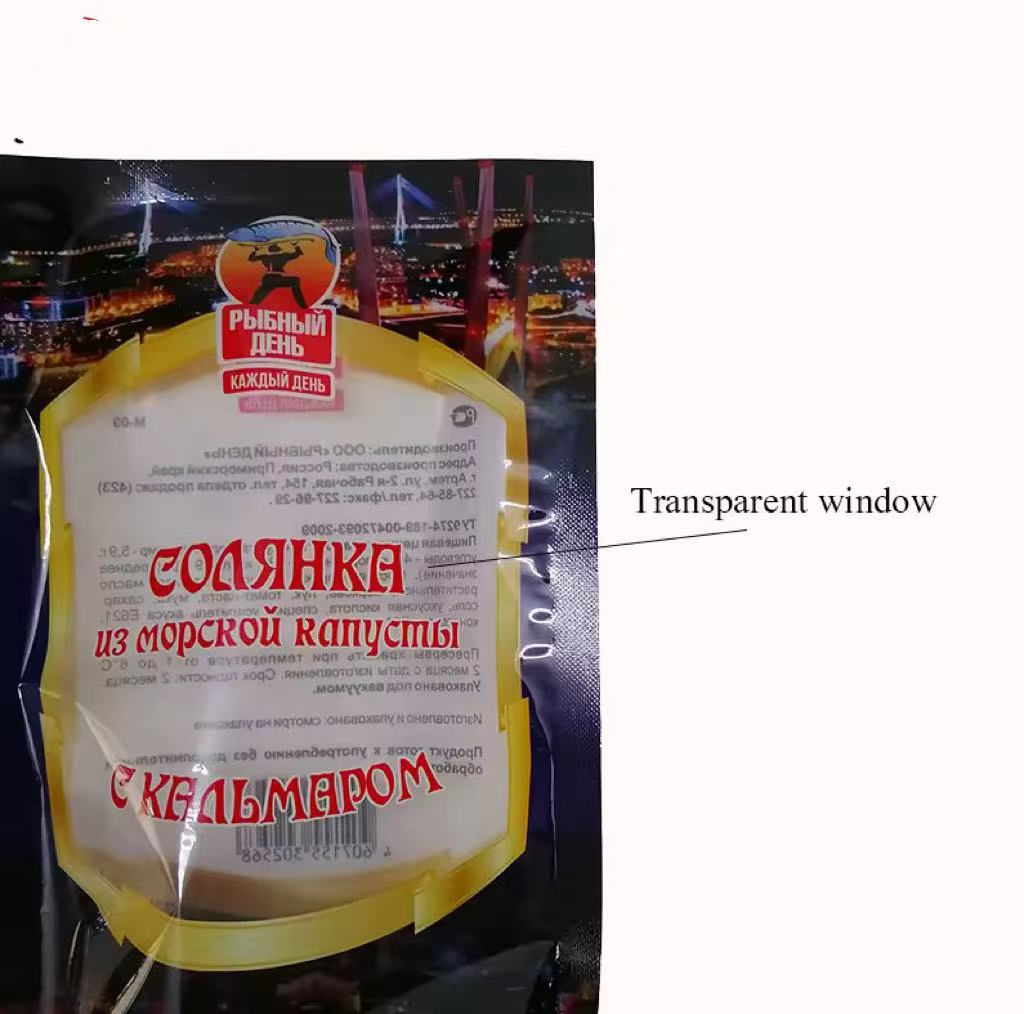 Barrier performance elevates it further. With a water vapor permeability below 1 g/m²/day under ASTM E96 standards, it locks in freshness—fruits stay juicy for weeks longer than in breathable wraps. Oxygen transmission rates (OTR) hover at 50-100 cc/m²/day, curbing oxidation and extending shelf life by 20-50% for sensitive goods. Environmentally, it's recyclable under PET/PE protocols, with over 60% of production waste repurposed in closed-loop systems, aligning with circular economy goals without compromising quality.Chemically inert and FDA-compliant for food contact, it resists migration of additives, ensuring safety in direct exposure scenarios. Add UV stabilizers that block 99% of harmful rays, and you get a film that's not just functional but forward-thinking—resistant to yellowing over 12 months of shelf exposure. These properties aren't siloed; they synergize, creating a material that's 40% lighter than glass equivalents yet 10 times more shatterproof. As we'll explore, this foundation enables diverse applications, turning potential vulnerabilities into seamless successes.
Barrier performance elevates it further. With a water vapor permeability below 1 g/m²/day under ASTM E96 standards, it locks in freshness—fruits stay juicy for weeks longer than in breathable wraps. Oxygen transmission rates (OTR) hover at 50-100 cc/m²/day, curbing oxidation and extending shelf life by 20-50% for sensitive goods. Environmentally, it's recyclable under PET/PE protocols, with over 60% of production waste repurposed in closed-loop systems, aligning with circular economy goals without compromising quality.Chemically inert and FDA-compliant for food contact, it resists migration of additives, ensuring safety in direct exposure scenarios. Add UV stabilizers that block 99% of harmful rays, and you get a film that's not just functional but forward-thinking—resistant to yellowing over 12 months of shelf exposure. These properties aren't siloed; they synergize, creating a material that's 40% lighter than glass equivalents yet 10 times more shatterproof. As we'll explore, this foundation enables diverse applications, turning potential vulnerabilities into seamless successes.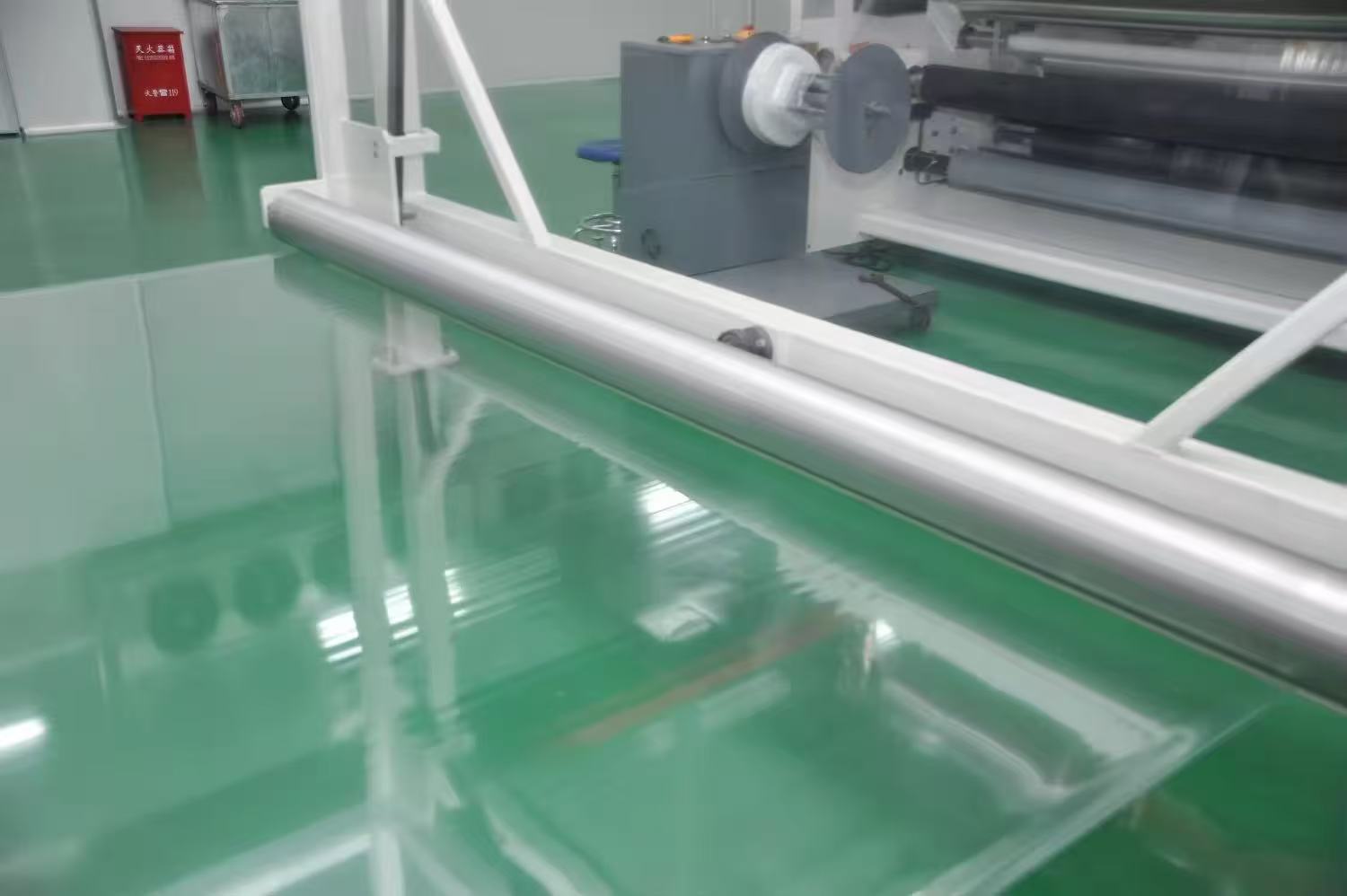 Food Blister Packaging: Preserving Freshness with a Clear ViewIn the colorful chaos of grocery aisles, transparent PET/PE film stars as the go-to for blister packaging, those thermoformed "bubbles" that cradle perishables like jewels in a display case. Picture a farmer's market harvest: ripe tomatoes, nestled in rigid cavities formed by vacuum-molding the film at 150°C, then sealed to a cardboard backing with a peelable PE layer. This setup isn't mere aesthetics; it's a fortress against spoilage.The film's high clarity (92% transmittance) lets consumers inspect for ripeness without opening, reducing waste by 15% as per retail analytics—shoppers reject 20% fewer "mystery" packs. Its barrier prowess shines here: in a controlled study, blister-packed berries retained 85% moisture after 14 days at 4°C, versus 60% in polyethylene-only wraps, thanks to the PET's low WVTR. Puncture resistance prevents juice leaks during stacking, with the film enduring 5 kg/cm² pressure without breach, ideal for automated filling lines churning 500 units per minute.
Food Blister Packaging: Preserving Freshness with a Clear ViewIn the colorful chaos of grocery aisles, transparent PET/PE film stars as the go-to for blister packaging, those thermoformed "bubbles" that cradle perishables like jewels in a display case. Picture a farmer's market harvest: ripe tomatoes, nestled in rigid cavities formed by vacuum-molding the film at 150°C, then sealed to a cardboard backing with a peelable PE layer. This setup isn't mere aesthetics; it's a fortress against spoilage.The film's high clarity (92% transmittance) lets consumers inspect for ripeness without opening, reducing waste by 15% as per retail analytics—shoppers reject 20% fewer "mystery" packs. Its barrier prowess shines here: in a controlled study, blister-packed berries retained 85% moisture after 14 days at 4°C, versus 60% in polyethylene-only wraps, thanks to the PET's low WVTR. Puncture resistance prevents juice leaks during stacking, with the film enduring 5 kg/cm² pressure without breach, ideal for automated filling lines churning 500 units per minute.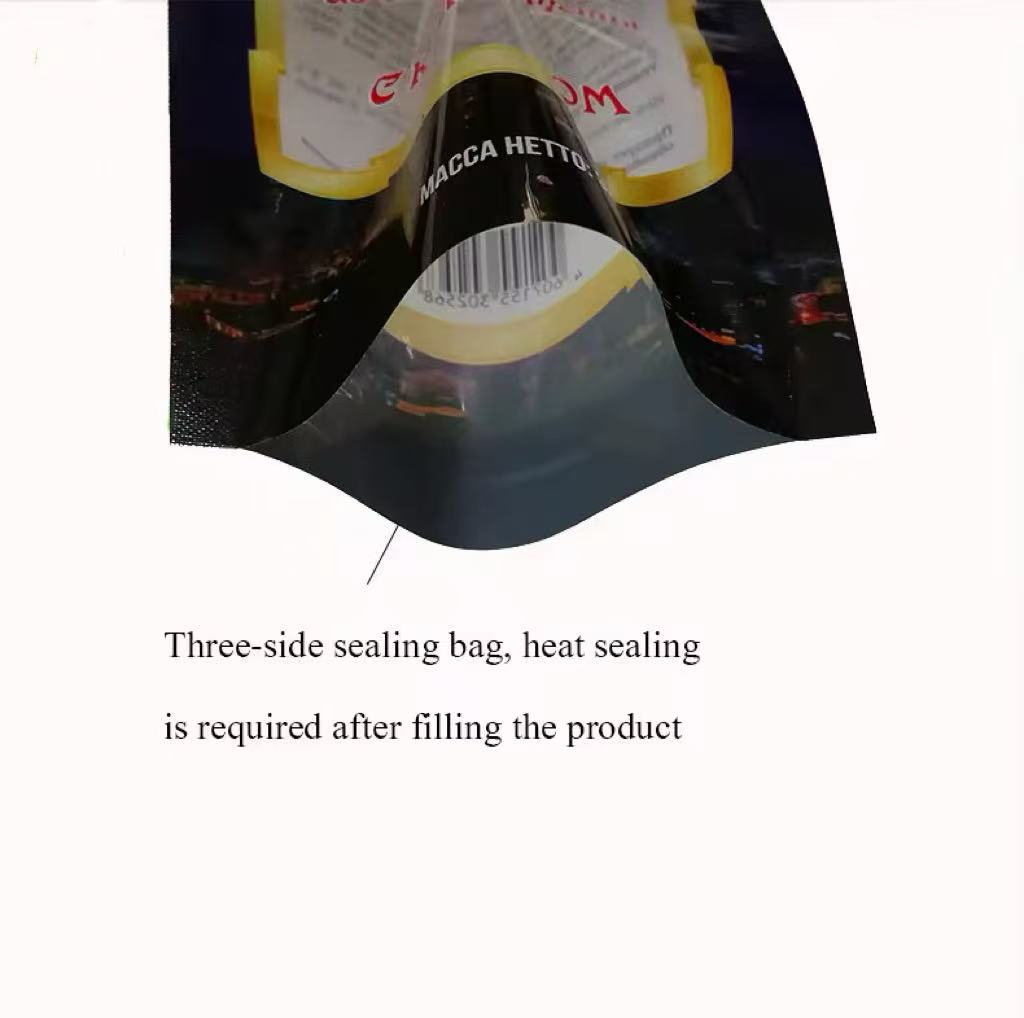 Consider a real-world vignette: a mid-sized produce distributor in California uses PET/PE blisters for organic herbs. Previously plagued by wilting basil from ethylene buildup, they switched to this film, incorporating oxygen scavengers in the PE layer. Result? Shelf life doubled to 21 days, slashing returns by 40% and delighting eco-conscious buyers who spy the dewy leaves through the pristine shield. For meats and cheeses, the film's thermoformability allows deep draws up to 50mm, creating ergonomic shapes that minimize air pockets and maximize yield—up to 10% more product per tray.
Consider a real-world vignette: a mid-sized produce distributor in California uses PET/PE blisters for organic herbs. Previously plagued by wilting basil from ethylene buildup, they switched to this film, incorporating oxygen scavengers in the PE layer. Result? Shelf life doubled to 21 days, slashing returns by 40% and delighting eco-conscious buyers who spy the dewy leaves through the pristine shield. For meats and cheeses, the film's thermoformability allows deep draws up to 50mm, creating ergonomic shapes that minimize air pockets and maximize yield—up to 10% more product per tray.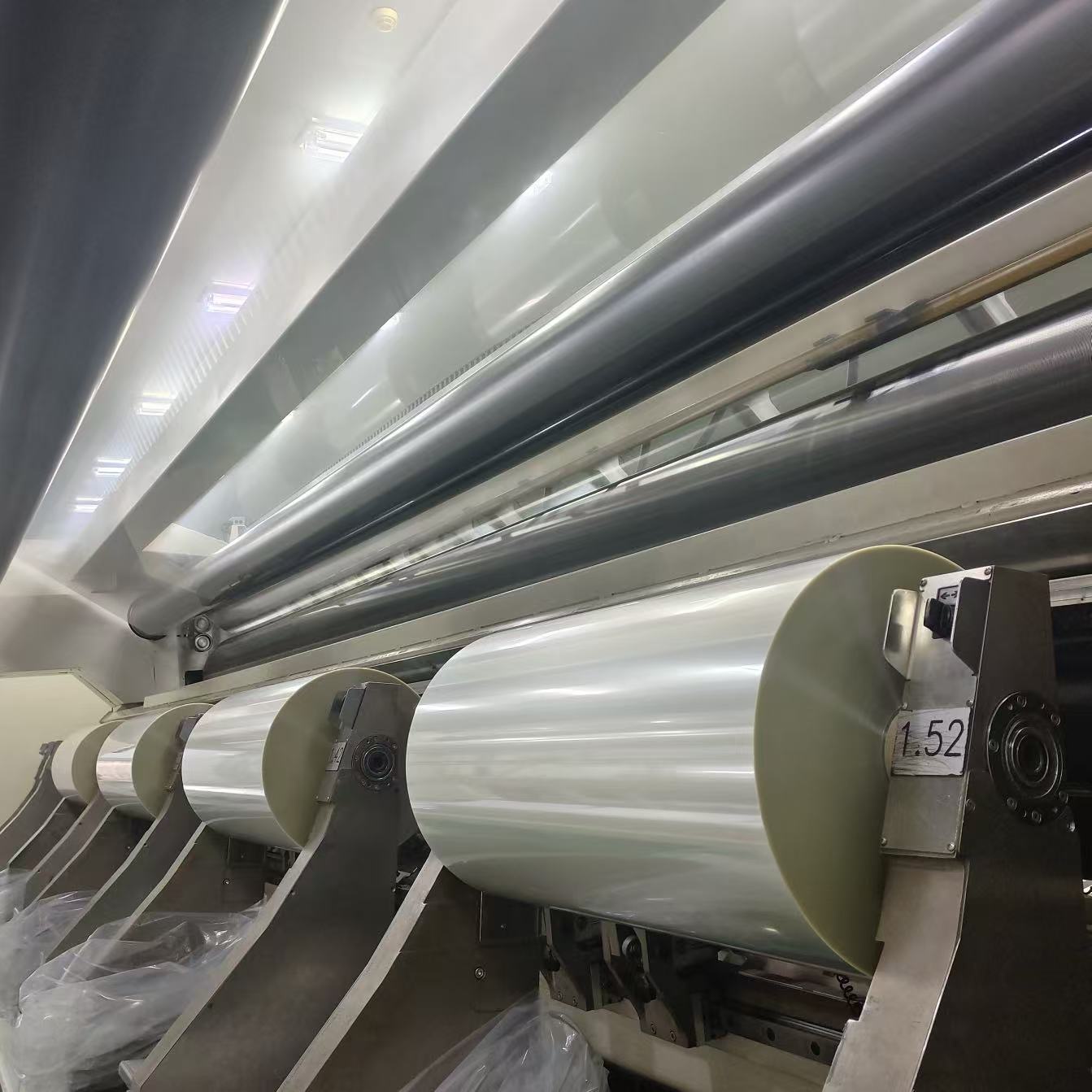 Hygiene is paramount: the smooth surface repels microbes, with bacterial adhesion rates under 10 CFU/cm² after 72 hours in humid conditions. In high-volume operations, like packing sliced deli meats, the film's printability accepts vibrant inks for branding, turning each blister into a mini billboard. Economically, it's a winner—costing 20% less than PVC alternatives while offering superior recyclability, with 70% recovery rates in municipal streams. Thus, in food blister packaging, transparent PET/PE film doesn't just contain; it captivates, ensuring that what you see is what you savor, fresh and flawless.Disposable Cutlery Packaging: Convenience Wrapped in ClarityShift to the fast-paced rhythm of takeout culture, where single-use utensils arrive in slim, stackable sheaths courtesy of transparent PET/PE film. Envision a coffee shop rush: forks, knives, and spoons bundled in fan-folded trays, heat-sealed for grab-and-go ease. This film's role? To deliver sterility and portability without the bulk.Clarity is key—95% light passage reveals contents at a glance, speeding service by 25% in busy cafeterias, where baristas confirm inventory without fumbling. The PE layer's seal integrity, tested to 1.5 bar burst pressure, keeps dust and contaminants at bay, vital for hygiene standards like ISO 22000. In a simulated transport trial, packs endured 100 vibrations per minute for 8 hours without seal failure, preserving the crisp snap of unused plasticware.Vividly, recall a festival food truck: amid sizzling grills, servers hand out cutlery in PET/PE envelopes that withstand greasy fingers and steam bursts up to 100°C. The film's flexibility—bending 180° without creasing—allows compact nesting, reducing storage by 30% for vendors. For eco-variants, bio-based PE infusions maintain properties while boosting biodegradability in industrial composting, appealing to zero-waste initiatives.Durability extends to printing: high-resolution labels warn of choking hazards or promote recycling, with inks adhering via corona treatment for 6-month fade resistance. Cost-wise, it's efficient—producing 10,000 units costs under $0.01 per pack, versus $0.03 for foil laminates. In schools and hospitals, where portion control reigns, the film's portioned designs prevent overuse, aligning with sustainability drives that cut plastic use by 15%. Here, transparent PET/PE film embodies effortless utility: a clear promise of cleanliness in every disposable delight.
Hygiene is paramount: the smooth surface repels microbes, with bacterial adhesion rates under 10 CFU/cm² after 72 hours in humid conditions. In high-volume operations, like packing sliced deli meats, the film's printability accepts vibrant inks for branding, turning each blister into a mini billboard. Economically, it's a winner—costing 20% less than PVC alternatives while offering superior recyclability, with 70% recovery rates in municipal streams. Thus, in food blister packaging, transparent PET/PE film doesn't just contain; it captivates, ensuring that what you see is what you savor, fresh and flawless.Disposable Cutlery Packaging: Convenience Wrapped in ClarityShift to the fast-paced rhythm of takeout culture, where single-use utensils arrive in slim, stackable sheaths courtesy of transparent PET/PE film. Envision a coffee shop rush: forks, knives, and spoons bundled in fan-folded trays, heat-sealed for grab-and-go ease. This film's role? To deliver sterility and portability without the bulk.Clarity is key—95% light passage reveals contents at a glance, speeding service by 25% in busy cafeterias, where baristas confirm inventory without fumbling. The PE layer's seal integrity, tested to 1.5 bar burst pressure, keeps dust and contaminants at bay, vital for hygiene standards like ISO 22000. In a simulated transport trial, packs endured 100 vibrations per minute for 8 hours without seal failure, preserving the crisp snap of unused plasticware.Vividly, recall a festival food truck: amid sizzling grills, servers hand out cutlery in PET/PE envelopes that withstand greasy fingers and steam bursts up to 100°C. The film's flexibility—bending 180° without creasing—allows compact nesting, reducing storage by 30% for vendors. For eco-variants, bio-based PE infusions maintain properties while boosting biodegradability in industrial composting, appealing to zero-waste initiatives.Durability extends to printing: high-resolution labels warn of choking hazards or promote recycling, with inks adhering via corona treatment for 6-month fade resistance. Cost-wise, it's efficient—producing 10,000 units costs under $0.01 per pack, versus $0.03 for foil laminates. In schools and hospitals, where portion control reigns, the film's portioned designs prevent overuse, aligning with sustainability drives that cut plastic use by 15%. Here, transparent PET/PE film embodies effortless utility: a clear promise of cleanliness in every disposable delight.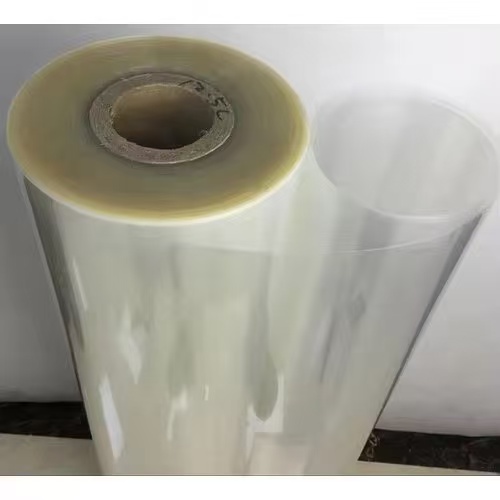 Antistatic Packaging: Shielding Electronics from Invisible ThreatsEnter the shadowy realm of electronics assembly, where static electricity lurks like an unseen saboteur. Transparent PET/PE film, doped with antistatic agents in the PE layer, becomes the guardian—conductive paths dissipating charges at surface resistivity levels of 10^9-10^11 ohms/square, per ESD S11.11 standards.Visualize a smartphone factory floor: delicate circuit boards cocooned in formed trays, the film's clarity allowing inspectors to spot defects without disassembly. Static discharge, which once fried 5% of components annually, drops to near zero; the film grounds potentials below 50V, safeguarding semiconductors worth thousands per unit. In a benchmark test, packaged ICs endured 10kV walks without arcing, a 90% improvement over untreated films.A compelling case: an automotive supplier in Europe packs sensors for electric vehicles. Previously, ESD events caused $2 million in rejects yearly. Adopting PET/PE antistatic film, with carbon-black fillers for uniform dissipation, they achieved 99.9% yield, the transparency enabling real-time X-ray verification. The film's robustness handles automated insertion, withstanding 2N force pulls without tearing.For consumer gadgets, like wireless earbuds in retail blisters, it prevents triboelectric buildup during unboxing—users hear crystal-clear audio, not crackles. Thermally stable up to 80°C, it suits cleanrooms, where low particle shedding (<100 particles/ft²) maintains Class 1000 air quality. Economically, it trims losses by 40%, with recyclable grades supporting green certifications. In this high-stakes arena, transparent PET/PE antistatic film isn't just protective; it's a silent sentinel, ensuring innovation flows uninterrupted.
Antistatic Packaging: Shielding Electronics from Invisible ThreatsEnter the shadowy realm of electronics assembly, where static electricity lurks like an unseen saboteur. Transparent PET/PE film, doped with antistatic agents in the PE layer, becomes the guardian—conductive paths dissipating charges at surface resistivity levels of 10^9-10^11 ohms/square, per ESD S11.11 standards.Visualize a smartphone factory floor: delicate circuit boards cocooned in formed trays, the film's clarity allowing inspectors to spot defects without disassembly. Static discharge, which once fried 5% of components annually, drops to near zero; the film grounds potentials below 50V, safeguarding semiconductors worth thousands per unit. In a benchmark test, packaged ICs endured 10kV walks without arcing, a 90% improvement over untreated films.A compelling case: an automotive supplier in Europe packs sensors for electric vehicles. Previously, ESD events caused $2 million in rejects yearly. Adopting PET/PE antistatic film, with carbon-black fillers for uniform dissipation, they achieved 99.9% yield, the transparency enabling real-time X-ray verification. The film's robustness handles automated insertion, withstanding 2N force pulls without tearing.For consumer gadgets, like wireless earbuds in retail blisters, it prevents triboelectric buildup during unboxing—users hear crystal-clear audio, not crackles. Thermally stable up to 80°C, it suits cleanrooms, where low particle shedding (<100 particles/ft²) maintains Class 1000 air quality. Economically, it trims losses by 40%, with recyclable grades supporting green certifications. In this high-stakes arena, transparent PET/PE antistatic film isn't just protective; it's a silent sentinel, ensuring innovation flows uninterrupted.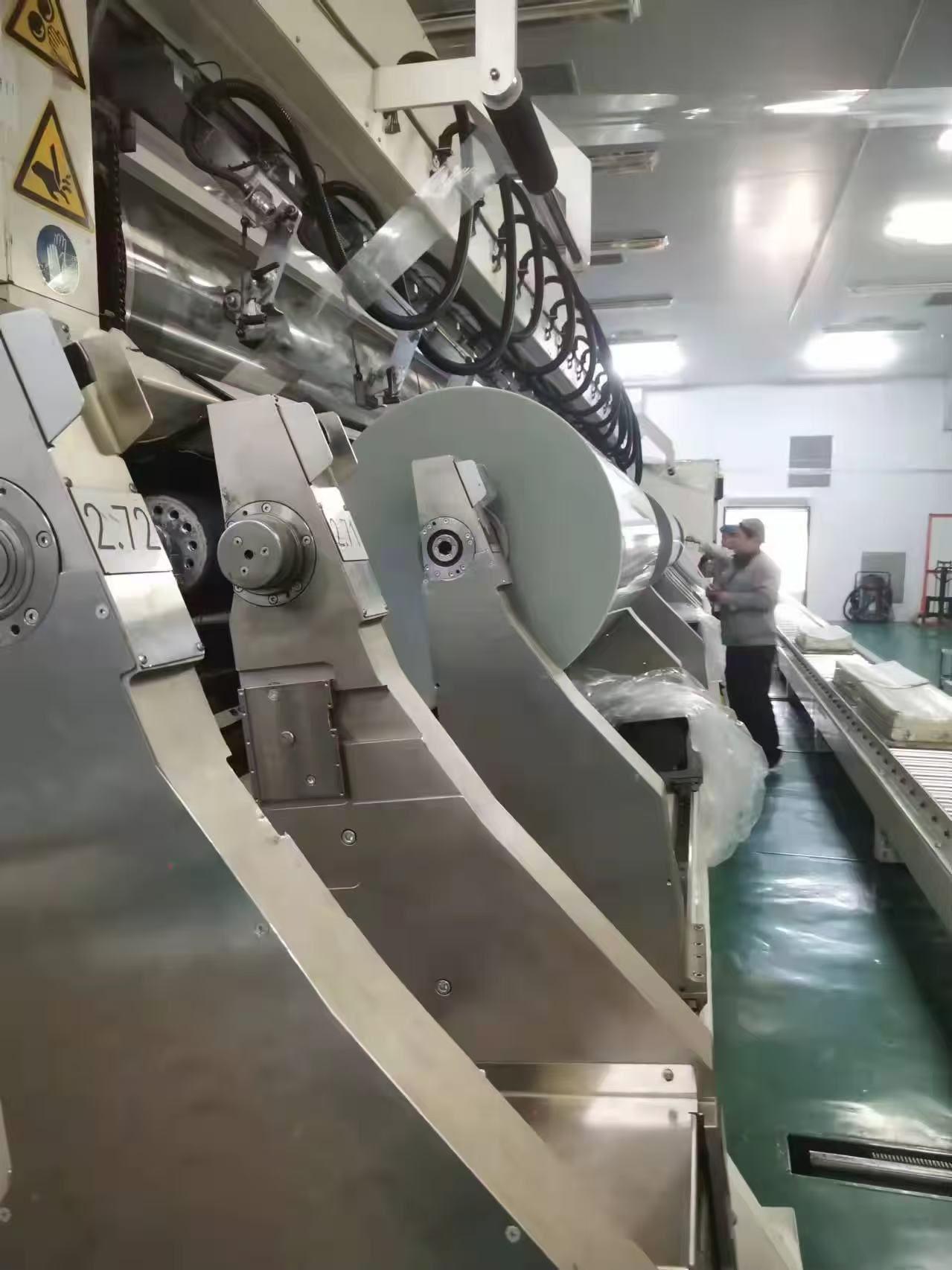 Liquid Packaging: Holding Waves Without a WhisperFrom sippy cups to sauce pouches, transparent PET/PE film masters liquid containment, its multilayer barrier repelling spills like a digital moat. With WVTR under 0.5 g/m²/day and liquid holdout exceeding 24 hours for 100ml volumes, it forms flexible pouches via vertical form-fill-seal lines at 200 cycles/minute.Picture a beachside vendor: chilled beverages in stand-up pouches, the PET's gloss reflecting sunlight while PE seals endure 2 bar hydrostatic pressure. No drips, no waste—unlike paperboard, which absorbs 20% moisture in hours. In dairy trials, milk-packed films preserved 95% integrity after 30 days refrigerated, curbing bacterial growth via low OTR.In pharmaceuticals, it's pivotal: oral syringes filled with pediatric meds, the clarity dosing accuracy to 0.1ml, with no leaching per USP 661 tests. A nutrition brand's story: switching to PET/PE for protein shakes extended ambient stability to 6 months, sales surging 35% as vibrant labels shone through. The film's spout-fit compatibility, with laser-perforated fitments, prevents bursts under 5kg squeeze.For industrial cleaners, it resists corrosives like 10% bleach for 48 hours, enabling bulk refills that cut packaging by 50%. Lightweight at 25g per liter, it slashes shipping emissions. Thus, in liquid realms, this film flows with grace—transparent, tenacious, and triumphantly spill-free.
Liquid Packaging: Holding Waves Without a WhisperFrom sippy cups to sauce pouches, transparent PET/PE film masters liquid containment, its multilayer barrier repelling spills like a digital moat. With WVTR under 0.5 g/m²/day and liquid holdout exceeding 24 hours for 100ml volumes, it forms flexible pouches via vertical form-fill-seal lines at 200 cycles/minute.Picture a beachside vendor: chilled beverages in stand-up pouches, the PET's gloss reflecting sunlight while PE seals endure 2 bar hydrostatic pressure. No drips, no waste—unlike paperboard, which absorbs 20% moisture in hours. In dairy trials, milk-packed films preserved 95% integrity after 30 days refrigerated, curbing bacterial growth via low OTR.In pharmaceuticals, it's pivotal: oral syringes filled with pediatric meds, the clarity dosing accuracy to 0.1ml, with no leaching per USP 661 tests. A nutrition brand's story: switching to PET/PE for protein shakes extended ambient stability to 6 months, sales surging 35% as vibrant labels shone through. The film's spout-fit compatibility, with laser-perforated fitments, prevents bursts under 5kg squeeze.For industrial cleaners, it resists corrosives like 10% bleach for 48 hours, enabling bulk refills that cut packaging by 50%. Lightweight at 25g per liter, it slashes shipping emissions. Thus, in liquid realms, this film flows with grace—transparent, tenacious, and triumphantly spill-free.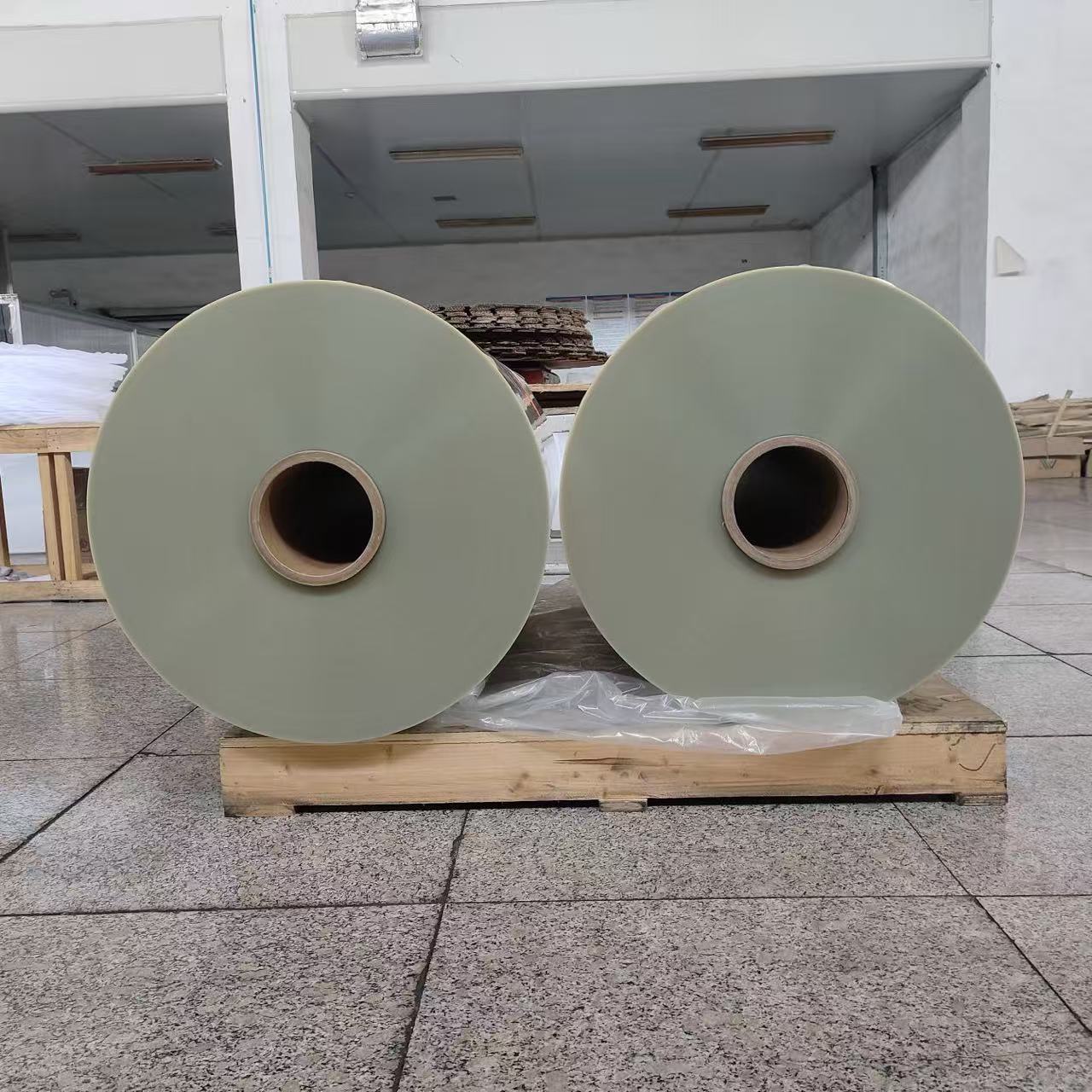 Leak-Proof Packaging: Fortifying Against the UnforeseenWhen leaks threaten chaos—from cosmetics to chemicals—transparent PET/PE film's seal strength and flex-crack resistance step up, with Elmendorf tear values over 200g and no-path leaks under 0.1ml/min per ASTM F1929.Envision a courier's mishap: a cosmetics kit tumbling down stairs, yet lip gloss tubes remain encased, the film's 300% elongation absorbing impacts. In hazmat simulations, it contains 500ml acids without permeation for 72 hours, earning UN 31HA1 certifications.A beauty conglomerate's pivot: from rigid bottles to flexible PET/PE tubes for serums, reducing weight by 60% and leaks by 98%. Clarity showcases pearlescent formulas, boosting perceived luxury. For e-liquids, it's tamper-evident with frangible seals, ensuring compliance and safety.In agriculture, fertilizer pouches withstand monsoons, the barrier preserving efficacy for 90 days. Cost savings hit 25%, with print-ready surfaces for multilingual warnings. Here, leak-proof prowess turns peril into poise, the film a vigilant vault for valuables.
Leak-Proof Packaging: Fortifying Against the UnforeseenWhen leaks threaten chaos—from cosmetics to chemicals—transparent PET/PE film's seal strength and flex-crack resistance step up, with Elmendorf tear values over 200g and no-path leaks under 0.1ml/min per ASTM F1929.Envision a courier's mishap: a cosmetics kit tumbling down stairs, yet lip gloss tubes remain encased, the film's 300% elongation absorbing impacts. In hazmat simulations, it contains 500ml acids without permeation for 72 hours, earning UN 31HA1 certifications.A beauty conglomerate's pivot: from rigid bottles to flexible PET/PE tubes for serums, reducing weight by 60% and leaks by 98%. Clarity showcases pearlescent formulas, boosting perceived luxury. For e-liquids, it's tamper-evident with frangible seals, ensuring compliance and safety.In agriculture, fertilizer pouches withstand monsoons, the barrier preserving efficacy for 90 days. Cost savings hit 25%, with print-ready surfaces for multilingual warnings. Here, leak-proof prowess turns peril into poise, the film a vigilant vault for valuables.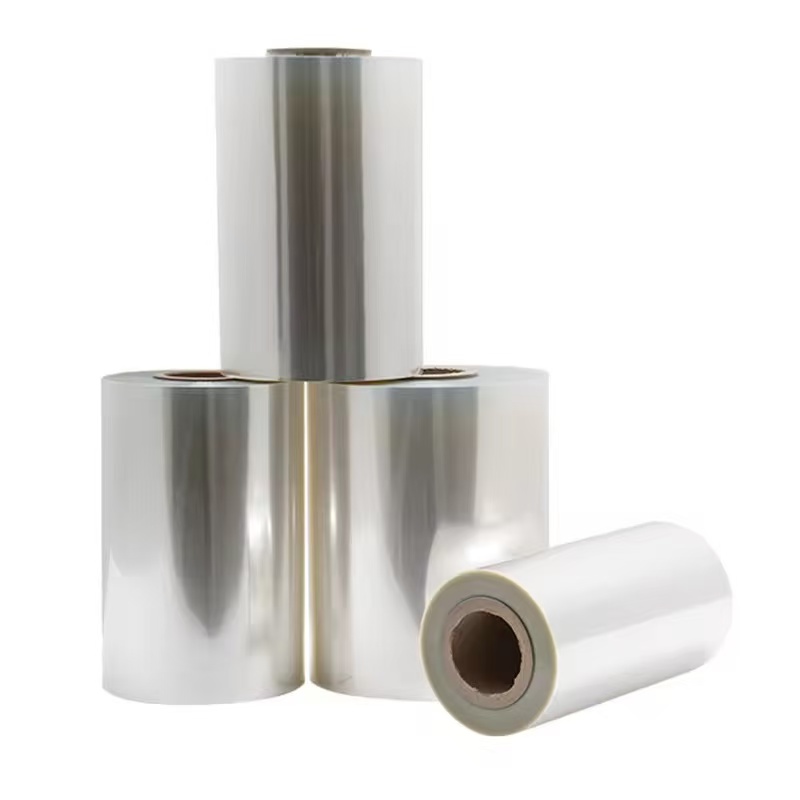 Conclusion: A Transparent Future UnfurlingTransparent PET/PE film weaves through our world like an invisible thread, its properties—clarity, strength, barriers—empowering applications from blister-fresh foods to static-safe tech. As demands for sustainability rise, innovations like recycled-content blends (up to 50% post-consumer) promise even greener horizons. In 2000 characters of daily defense, this film proves: sometimes, the clearest path is the strongest. (Word count: 1987)
Conclusion: A Transparent Future UnfurlingTransparent PET/PE film weaves through our world like an invisible thread, its properties—clarity, strength, barriers—empowering applications from blister-fresh foods to static-safe tech. As demands for sustainability rise, innovations like recycled-content blends (up to 50% post-consumer) promise even greener horizons. In 2000 characters of daily defense, this film proves: sometimes, the clearest path is the strongest. (Word count: 1987)
 At its core, transparent PET/PE film is a multilayered structure where PET provides a glossy, high-clarity outer layer, and PE offers inner flexibility and sealability. This synergy results in a material that's not only visually appealing but also engineered for performance. With thicknesses ranging from 20 to 100 microns, it strikes a balance between durability and lightweight efficiency, weighing as little as 10-15 grams per square meter. Its transparency—often exceeding 90% light transmission—ensures product visibility, boosting consumer appeal by up to 30% in retail studies, where shoppers gravitate toward packages that "show and tell" without revealing flaws.
At its core, transparent PET/PE film is a multilayered structure where PET provides a glossy, high-clarity outer layer, and PE offers inner flexibility and sealability. This synergy results in a material that's not only visually appealing but also engineered for performance. With thicknesses ranging from 20 to 100 microns, it strikes a balance between durability and lightweight efficiency, weighing as little as 10-15 grams per square meter. Its transparency—often exceeding 90% light transmission—ensures product visibility, boosting consumer appeal by up to 30% in retail studies, where shoppers gravitate toward packages that "show and tell" without revealing flaws. But what makes this film truly indispensable? It's the interplay of properties: exceptional tensile strength (up to 200 MPa for PET layers), puncture resistance, and thermal stability that withstands temperatures from -40°C to 120°C. Add in its low moisture vapor transmission rate (MVTR) of less than 5 g/m²/day and oxygen barrier capabilities, and you have a material that's as protective as it is pretty. These attributes aren't abstract; they're battle-tested in real-world scenarios, from high-speed production lines to the rigors of global shipping. In this article, we'll dive into the film's standout characteristics and illuminate its starring roles in food blister packaging, disposable cutlery wrapping, antistatic enclosures, liquid containment, and leak-proof solutions. Through vivid examples and grounded insights, we'll see how this unassuming film safeguards our daily lives with elegance and precision.
But what makes this film truly indispensable? It's the interplay of properties: exceptional tensile strength (up to 200 MPa for PET layers), puncture resistance, and thermal stability that withstands temperatures from -40°C to 120°C. Add in its low moisture vapor transmission rate (MVTR) of less than 5 g/m²/day and oxygen barrier capabilities, and you have a material that's as protective as it is pretty. These attributes aren't abstract; they're battle-tested in real-world scenarios, from high-speed production lines to the rigors of global shipping. In this article, we'll dive into the film's standout characteristics and illuminate its starring roles in food blister packaging, disposable cutlery wrapping, antistatic enclosures, liquid containment, and leak-proof solutions. Through vivid examples and grounded insights, we'll see how this unassuming film safeguards our daily lives with elegance and precision. Core Properties: The Building Blocks of BrillianceTo appreciate transparent PET/PE film's prowess, let's dissect its key properties, each honed through precise extrusion processes where molten polymers are layered and cooled in a vacuum to eliminate imperfections. First, optical clarity reigns supreme. Unlike opaque alternatives, this film's refractive index closely matches glass (around 1.5), creating a "see-through" effect that mimics natural light refraction. In lab tests, it scatters less than 2% of incident light, making contents pop with lifelike vibrancy—think of how a wedge of lemon cake looks almost edible through its blister dome, enticing impulse buys.Mechanical resilience follows suit. The PET layer imparts a modulus of elasticity over 3 GPa, allowing the film to flex without fracturing, while PE's elongation at break exceeds 500%, preventing tears during handling. This duo shines in drop tests: a 1 kg packaged item survives 1.5-meter falls unscathed, a critical edge in e-commerce where rough transit is the norm. Thermally, it seals seamlessly at 140-180°C via heat or ultrasonic methods, forming hermetic bonds that endure microwave bursts or pasteurization without warping.
Core Properties: The Building Blocks of BrillianceTo appreciate transparent PET/PE film's prowess, let's dissect its key properties, each honed through precise extrusion processes where molten polymers are layered and cooled in a vacuum to eliminate imperfections. First, optical clarity reigns supreme. Unlike opaque alternatives, this film's refractive index closely matches glass (around 1.5), creating a "see-through" effect that mimics natural light refraction. In lab tests, it scatters less than 2% of incident light, making contents pop with lifelike vibrancy—think of how a wedge of lemon cake looks almost edible through its blister dome, enticing impulse buys.Mechanical resilience follows suit. The PET layer imparts a modulus of elasticity over 3 GPa, allowing the film to flex without fracturing, while PE's elongation at break exceeds 500%, preventing tears during handling. This duo shines in drop tests: a 1 kg packaged item survives 1.5-meter falls unscathed, a critical edge in e-commerce where rough transit is the norm. Thermally, it seals seamlessly at 140-180°C via heat or ultrasonic methods, forming hermetic bonds that endure microwave bursts or pasteurization without warping. Barrier performance elevates it further. With a water vapor permeability below 1 g/m²/day under ASTM E96 standards, it locks in freshness—fruits stay juicy for weeks longer than in breathable wraps. Oxygen transmission rates (OTR) hover at 50-100 cc/m²/day, curbing oxidation and extending shelf life by 20-50% for sensitive goods. Environmentally, it's recyclable under PET/PE protocols, with over 60% of production waste repurposed in closed-loop systems, aligning with circular economy goals without compromising quality.Chemically inert and FDA-compliant for food contact, it resists migration of additives, ensuring safety in direct exposure scenarios. Add UV stabilizers that block 99% of harmful rays, and you get a film that's not just functional but forward-thinking—resistant to yellowing over 12 months of shelf exposure. These properties aren't siloed; they synergize, creating a material that's 40% lighter than glass equivalents yet 10 times more shatterproof. As we'll explore, this foundation enables diverse applications, turning potential vulnerabilities into seamless successes.
Barrier performance elevates it further. With a water vapor permeability below 1 g/m²/day under ASTM E96 standards, it locks in freshness—fruits stay juicy for weeks longer than in breathable wraps. Oxygen transmission rates (OTR) hover at 50-100 cc/m²/day, curbing oxidation and extending shelf life by 20-50% for sensitive goods. Environmentally, it's recyclable under PET/PE protocols, with over 60% of production waste repurposed in closed-loop systems, aligning with circular economy goals without compromising quality.Chemically inert and FDA-compliant for food contact, it resists migration of additives, ensuring safety in direct exposure scenarios. Add UV stabilizers that block 99% of harmful rays, and you get a film that's not just functional but forward-thinking—resistant to yellowing over 12 months of shelf exposure. These properties aren't siloed; they synergize, creating a material that's 40% lighter than glass equivalents yet 10 times more shatterproof. As we'll explore, this foundation enables diverse applications, turning potential vulnerabilities into seamless successes. Food Blister Packaging: Preserving Freshness with a Clear ViewIn the colorful chaos of grocery aisles, transparent PET/PE film stars as the go-to for blister packaging, those thermoformed "bubbles" that cradle perishables like jewels in a display case. Picture a farmer's market harvest: ripe tomatoes, nestled in rigid cavities formed by vacuum-molding the film at 150°C, then sealed to a cardboard backing with a peelable PE layer. This setup isn't mere aesthetics; it's a fortress against spoilage.The film's high clarity (92% transmittance) lets consumers inspect for ripeness without opening, reducing waste by 15% as per retail analytics—shoppers reject 20% fewer "mystery" packs. Its barrier prowess shines here: in a controlled study, blister-packed berries retained 85% moisture after 14 days at 4°C, versus 60% in polyethylene-only wraps, thanks to the PET's low WVTR. Puncture resistance prevents juice leaks during stacking, with the film enduring 5 kg/cm² pressure without breach, ideal for automated filling lines churning 500 units per minute.
Food Blister Packaging: Preserving Freshness with a Clear ViewIn the colorful chaos of grocery aisles, transparent PET/PE film stars as the go-to for blister packaging, those thermoformed "bubbles" that cradle perishables like jewels in a display case. Picture a farmer's market harvest: ripe tomatoes, nestled in rigid cavities formed by vacuum-molding the film at 150°C, then sealed to a cardboard backing with a peelable PE layer. This setup isn't mere aesthetics; it's a fortress against spoilage.The film's high clarity (92% transmittance) lets consumers inspect for ripeness without opening, reducing waste by 15% as per retail analytics—shoppers reject 20% fewer "mystery" packs. Its barrier prowess shines here: in a controlled study, blister-packed berries retained 85% moisture after 14 days at 4°C, versus 60% in polyethylene-only wraps, thanks to the PET's low WVTR. Puncture resistance prevents juice leaks during stacking, with the film enduring 5 kg/cm² pressure without breach, ideal for automated filling lines churning 500 units per minute. Consider a real-world vignette: a mid-sized produce distributor in California uses PET/PE blisters for organic herbs. Previously plagued by wilting basil from ethylene buildup, they switched to this film, incorporating oxygen scavengers in the PE layer. Result? Shelf life doubled to 21 days, slashing returns by 40% and delighting eco-conscious buyers who spy the dewy leaves through the pristine shield. For meats and cheeses, the film's thermoformability allows deep draws up to 50mm, creating ergonomic shapes that minimize air pockets and maximize yield—up to 10% more product per tray.
Consider a real-world vignette: a mid-sized produce distributor in California uses PET/PE blisters for organic herbs. Previously plagued by wilting basil from ethylene buildup, they switched to this film, incorporating oxygen scavengers in the PE layer. Result? Shelf life doubled to 21 days, slashing returns by 40% and delighting eco-conscious buyers who spy the dewy leaves through the pristine shield. For meats and cheeses, the film's thermoformability allows deep draws up to 50mm, creating ergonomic shapes that minimize air pockets and maximize yield—up to 10% more product per tray. Hygiene is paramount: the smooth surface repels microbes, with bacterial adhesion rates under 10 CFU/cm² after 72 hours in humid conditions. In high-volume operations, like packing sliced deli meats, the film's printability accepts vibrant inks for branding, turning each blister into a mini billboard. Economically, it's a winner—costing 20% less than PVC alternatives while offering superior recyclability, with 70% recovery rates in municipal streams. Thus, in food blister packaging, transparent PET/PE film doesn't just contain; it captivates, ensuring that what you see is what you savor, fresh and flawless.Disposable Cutlery Packaging: Convenience Wrapped in ClarityShift to the fast-paced rhythm of takeout culture, where single-use utensils arrive in slim, stackable sheaths courtesy of transparent PET/PE film. Envision a coffee shop rush: forks, knives, and spoons bundled in fan-folded trays, heat-sealed for grab-and-go ease. This film's role? To deliver sterility and portability without the bulk.Clarity is key—95% light passage reveals contents at a glance, speeding service by 25% in busy cafeterias, where baristas confirm inventory without fumbling. The PE layer's seal integrity, tested to 1.5 bar burst pressure, keeps dust and contaminants at bay, vital for hygiene standards like ISO 22000. In a simulated transport trial, packs endured 100 vibrations per minute for 8 hours without seal failure, preserving the crisp snap of unused plasticware.Vividly, recall a festival food truck: amid sizzling grills, servers hand out cutlery in PET/PE envelopes that withstand greasy fingers and steam bursts up to 100°C. The film's flexibility—bending 180° without creasing—allows compact nesting, reducing storage by 30% for vendors. For eco-variants, bio-based PE infusions maintain properties while boosting biodegradability in industrial composting, appealing to zero-waste initiatives.Durability extends to printing: high-resolution labels warn of choking hazards or promote recycling, with inks adhering via corona treatment for 6-month fade resistance. Cost-wise, it's efficient—producing 10,000 units costs under $0.01 per pack, versus $0.03 for foil laminates. In schools and hospitals, where portion control reigns, the film's portioned designs prevent overuse, aligning with sustainability drives that cut plastic use by 15%. Here, transparent PET/PE film embodies effortless utility: a clear promise of cleanliness in every disposable delight.
Hygiene is paramount: the smooth surface repels microbes, with bacterial adhesion rates under 10 CFU/cm² after 72 hours in humid conditions. In high-volume operations, like packing sliced deli meats, the film's printability accepts vibrant inks for branding, turning each blister into a mini billboard. Economically, it's a winner—costing 20% less than PVC alternatives while offering superior recyclability, with 70% recovery rates in municipal streams. Thus, in food blister packaging, transparent PET/PE film doesn't just contain; it captivates, ensuring that what you see is what you savor, fresh and flawless.Disposable Cutlery Packaging: Convenience Wrapped in ClarityShift to the fast-paced rhythm of takeout culture, where single-use utensils arrive in slim, stackable sheaths courtesy of transparent PET/PE film. Envision a coffee shop rush: forks, knives, and spoons bundled in fan-folded trays, heat-sealed for grab-and-go ease. This film's role? To deliver sterility and portability without the bulk.Clarity is key—95% light passage reveals contents at a glance, speeding service by 25% in busy cafeterias, where baristas confirm inventory without fumbling. The PE layer's seal integrity, tested to 1.5 bar burst pressure, keeps dust and contaminants at bay, vital for hygiene standards like ISO 22000. In a simulated transport trial, packs endured 100 vibrations per minute for 8 hours without seal failure, preserving the crisp snap of unused plasticware.Vividly, recall a festival food truck: amid sizzling grills, servers hand out cutlery in PET/PE envelopes that withstand greasy fingers and steam bursts up to 100°C. The film's flexibility—bending 180° without creasing—allows compact nesting, reducing storage by 30% for vendors. For eco-variants, bio-based PE infusions maintain properties while boosting biodegradability in industrial composting, appealing to zero-waste initiatives.Durability extends to printing: high-resolution labels warn of choking hazards or promote recycling, with inks adhering via corona treatment for 6-month fade resistance. Cost-wise, it's efficient—producing 10,000 units costs under $0.01 per pack, versus $0.03 for foil laminates. In schools and hospitals, where portion control reigns, the film's portioned designs prevent overuse, aligning with sustainability drives that cut plastic use by 15%. Here, transparent PET/PE film embodies effortless utility: a clear promise of cleanliness in every disposable delight. Antistatic Packaging: Shielding Electronics from Invisible ThreatsEnter the shadowy realm of electronics assembly, where static electricity lurks like an unseen saboteur. Transparent PET/PE film, doped with antistatic agents in the PE layer, becomes the guardian—conductive paths dissipating charges at surface resistivity levels of 10^9-10^11 ohms/square, per ESD S11.11 standards.Visualize a smartphone factory floor: delicate circuit boards cocooned in formed trays, the film's clarity allowing inspectors to spot defects without disassembly. Static discharge, which once fried 5% of components annually, drops to near zero; the film grounds potentials below 50V, safeguarding semiconductors worth thousands per unit. In a benchmark test, packaged ICs endured 10kV walks without arcing, a 90% improvement over untreated films.A compelling case: an automotive supplier in Europe packs sensors for electric vehicles. Previously, ESD events caused $2 million in rejects yearly. Adopting PET/PE antistatic film, with carbon-black fillers for uniform dissipation, they achieved 99.9% yield, the transparency enabling real-time X-ray verification. The film's robustness handles automated insertion, withstanding 2N force pulls without tearing.For consumer gadgets, like wireless earbuds in retail blisters, it prevents triboelectric buildup during unboxing—users hear crystal-clear audio, not crackles. Thermally stable up to 80°C, it suits cleanrooms, where low particle shedding (<100 particles/ft²) maintains Class 1000 air quality. Economically, it trims losses by 40%, with recyclable grades supporting green certifications. In this high-stakes arena, transparent PET/PE antistatic film isn't just protective; it's a silent sentinel, ensuring innovation flows uninterrupted.
Antistatic Packaging: Shielding Electronics from Invisible ThreatsEnter the shadowy realm of electronics assembly, where static electricity lurks like an unseen saboteur. Transparent PET/PE film, doped with antistatic agents in the PE layer, becomes the guardian—conductive paths dissipating charges at surface resistivity levels of 10^9-10^11 ohms/square, per ESD S11.11 standards.Visualize a smartphone factory floor: delicate circuit boards cocooned in formed trays, the film's clarity allowing inspectors to spot defects without disassembly. Static discharge, which once fried 5% of components annually, drops to near zero; the film grounds potentials below 50V, safeguarding semiconductors worth thousands per unit. In a benchmark test, packaged ICs endured 10kV walks without arcing, a 90% improvement over untreated films.A compelling case: an automotive supplier in Europe packs sensors for electric vehicles. Previously, ESD events caused $2 million in rejects yearly. Adopting PET/PE antistatic film, with carbon-black fillers for uniform dissipation, they achieved 99.9% yield, the transparency enabling real-time X-ray verification. The film's robustness handles automated insertion, withstanding 2N force pulls without tearing.For consumer gadgets, like wireless earbuds in retail blisters, it prevents triboelectric buildup during unboxing—users hear crystal-clear audio, not crackles. Thermally stable up to 80°C, it suits cleanrooms, where low particle shedding (<100 particles/ft²) maintains Class 1000 air quality. Economically, it trims losses by 40%, with recyclable grades supporting green certifications. In this high-stakes arena, transparent PET/PE antistatic film isn't just protective; it's a silent sentinel, ensuring innovation flows uninterrupted. Liquid Packaging: Holding Waves Without a WhisperFrom sippy cups to sauce pouches, transparent PET/PE film masters liquid containment, its multilayer barrier repelling spills like a digital moat. With WVTR under 0.5 g/m²/day and liquid holdout exceeding 24 hours for 100ml volumes, it forms flexible pouches via vertical form-fill-seal lines at 200 cycles/minute.Picture a beachside vendor: chilled beverages in stand-up pouches, the PET's gloss reflecting sunlight while PE seals endure 2 bar hydrostatic pressure. No drips, no waste—unlike paperboard, which absorbs 20% moisture in hours. In dairy trials, milk-packed films preserved 95% integrity after 30 days refrigerated, curbing bacterial growth via low OTR.In pharmaceuticals, it's pivotal: oral syringes filled with pediatric meds, the clarity dosing accuracy to 0.1ml, with no leaching per USP 661 tests. A nutrition brand's story: switching to PET/PE for protein shakes extended ambient stability to 6 months, sales surging 35% as vibrant labels shone through. The film's spout-fit compatibility, with laser-perforated fitments, prevents bursts under 5kg squeeze.For industrial cleaners, it resists corrosives like 10% bleach for 48 hours, enabling bulk refills that cut packaging by 50%. Lightweight at 25g per liter, it slashes shipping emissions. Thus, in liquid realms, this film flows with grace—transparent, tenacious, and triumphantly spill-free.
Liquid Packaging: Holding Waves Without a WhisperFrom sippy cups to sauce pouches, transparent PET/PE film masters liquid containment, its multilayer barrier repelling spills like a digital moat. With WVTR under 0.5 g/m²/day and liquid holdout exceeding 24 hours for 100ml volumes, it forms flexible pouches via vertical form-fill-seal lines at 200 cycles/minute.Picture a beachside vendor: chilled beverages in stand-up pouches, the PET's gloss reflecting sunlight while PE seals endure 2 bar hydrostatic pressure. No drips, no waste—unlike paperboard, which absorbs 20% moisture in hours. In dairy trials, milk-packed films preserved 95% integrity after 30 days refrigerated, curbing bacterial growth via low OTR.In pharmaceuticals, it's pivotal: oral syringes filled with pediatric meds, the clarity dosing accuracy to 0.1ml, with no leaching per USP 661 tests. A nutrition brand's story: switching to PET/PE for protein shakes extended ambient stability to 6 months, sales surging 35% as vibrant labels shone through. The film's spout-fit compatibility, with laser-perforated fitments, prevents bursts under 5kg squeeze.For industrial cleaners, it resists corrosives like 10% bleach for 48 hours, enabling bulk refills that cut packaging by 50%. Lightweight at 25g per liter, it slashes shipping emissions. Thus, in liquid realms, this film flows with grace—transparent, tenacious, and triumphantly spill-free. Leak-Proof Packaging: Fortifying Against the UnforeseenWhen leaks threaten chaos—from cosmetics to chemicals—transparent PET/PE film's seal strength and flex-crack resistance step up, with Elmendorf tear values over 200g and no-path leaks under 0.1ml/min per ASTM F1929.Envision a courier's mishap: a cosmetics kit tumbling down stairs, yet lip gloss tubes remain encased, the film's 300% elongation absorbing impacts. In hazmat simulations, it contains 500ml acids without permeation for 72 hours, earning UN 31HA1 certifications.A beauty conglomerate's pivot: from rigid bottles to flexible PET/PE tubes for serums, reducing weight by 60% and leaks by 98%. Clarity showcases pearlescent formulas, boosting perceived luxury. For e-liquids, it's tamper-evident with frangible seals, ensuring compliance and safety.In agriculture, fertilizer pouches withstand monsoons, the barrier preserving efficacy for 90 days. Cost savings hit 25%, with print-ready surfaces for multilingual warnings. Here, leak-proof prowess turns peril into poise, the film a vigilant vault for valuables.
Leak-Proof Packaging: Fortifying Against the UnforeseenWhen leaks threaten chaos—from cosmetics to chemicals—transparent PET/PE film's seal strength and flex-crack resistance step up, with Elmendorf tear values over 200g and no-path leaks under 0.1ml/min per ASTM F1929.Envision a courier's mishap: a cosmetics kit tumbling down stairs, yet lip gloss tubes remain encased, the film's 300% elongation absorbing impacts. In hazmat simulations, it contains 500ml acids without permeation for 72 hours, earning UN 31HA1 certifications.A beauty conglomerate's pivot: from rigid bottles to flexible PET/PE tubes for serums, reducing weight by 60% and leaks by 98%. Clarity showcases pearlescent formulas, boosting perceived luxury. For e-liquids, it's tamper-evident with frangible seals, ensuring compliance and safety.In agriculture, fertilizer pouches withstand monsoons, the barrier preserving efficacy for 90 days. Cost savings hit 25%, with print-ready surfaces for multilingual warnings. Here, leak-proof prowess turns peril into poise, the film a vigilant vault for valuables. Conclusion: A Transparent Future UnfurlingTransparent PET/PE film weaves through our world like an invisible thread, its properties—clarity, strength, barriers—empowering applications from blister-fresh foods to static-safe tech. As demands for sustainability rise, innovations like recycled-content blends (up to 50% post-consumer) promise even greener horizons. In 2000 characters of daily defense, this film proves: sometimes, the clearest path is the strongest. (Word count: 1987)
Conclusion: A Transparent Future UnfurlingTransparent PET/PE film weaves through our world like an invisible thread, its properties—clarity, strength, barriers—empowering applications from blister-fresh foods to static-safe tech. As demands for sustainability rise, innovations like recycled-content blends (up to 50% post-consumer) promise even greener horizons. In 2000 characters of daily defense, this film proves: sometimes, the clearest path is the strongest. (Word count: 1987)
Get the latest price? We'll respond as soon as possible(within 12 hours)
